Ten Essential Books on Typography
I am frequently asked by both students and professionals alike to recommend a book or books to both fill in their knowledge of type and design, as well as to act as a reference. These days, there are dozens, if not hundreds, of books on the graphic arts to choose from, but I have focused on those tried-and-true books that are respected by many professionals in the field. These books serve to provide and support the building of a strong foundation in typography, act as creative inspiration, as well as to emphasize the importance of excellence in every aspect of the design process.
Here is my selection of books that I believe every designer should have close at hand:
 The Elements of Typographic Style, 4th edition, by Robert Bringhurst, Hartley & Marks, Publishers, 2013.
The Elements of Typographic Style, 4th edition, by Robert Bringhurst, Hartley & Marks, Publishers, 2013.
This important book by renowned Canadian typographer and poet Robert Bringhurst is considered to be a classic of this genre. Bringhurst brings clarity to the art of typography within its slim pages, in an elegant, to-the-point manner. The Elements of Typographic Style is more than a style guide. It is also a brief history of typographic art, a compact encyclopedia of typographic symbols, concepts, and traditions, and an informative and also entertaining reference of both the old and the new.
Combining the practical, theoretical, and historical, this 4th edition is completely updated with a thorough exploration of the newest innovations in intelligent font technology, and is a must-have for graphic artists, editors, or anyone working with the printed or digital page.
 Thinking with Type: A Critical Guide for Designers, Writers, Editors, & Students, 2nd revised and expanded edition, by Ellen Lupton, Princeton Architectural Press, 2010.
Thinking with Type: A Critical Guide for Designers, Writers, Editors, & Students, 2nd revised and expanded edition, by Ellen Lupton, Princeton Architectural Press, 2010.
Thinking with Type is a small gem of a book that is a beautifully designed, concise guide to using typography, from the printed page to the computer screen. Ellen Lupton, a preeminent design author and educator, has created a stunning format chock full of illustrations and images to accompany the text.
This revised edition includes information on the use of lining and non-lining numerals, small caps and enlarged capitals, ornaments and captions, style sheets for print and the web, as well as information on captions, font licensing, mixing typefaces, and hand lettering. Thinking with Type is a type book for everyone: designers, writers, editors, students, and anyone else who works with words. The popular online companion to Thinking with Type has been revised to reflect the new material in the second edition.
 Fonts & Logos: Font Analysis, Logotype Design, Typography, Type Comparison, 1st edition, by Doyald Young, Delphi Publishers, 1999
Fonts & Logos: Font Analysis, Logotype Design, Typography, Type Comparison, 1st edition, by Doyald Young, Delphi Publishers, 1999
Font & Logos is a comprehensive book on basic typography by the highly-respected (and much beloved) teacher and master of the letterform, Doyald Young (whom we sadly lost in 2011). It is both an overview of typography as well as a technical guide that covers legibility, font design, the compatibility of type styles, and the function of type within logos. A total of 377 fonts are shown and discussed, and 91 pages are devoted to the analysis of the serif letter. Nearly 40 pages are devoted to one case study and the “How I Work” chapter details the author’s process step-by-step.
Three categories form the backbone of the book: Serifs, Sans Serif, and Scripts. Next you will find detailed discussions of logos of the same type style. The “Font Sampler” chapter looks at 37 fonts: classic, workhorses, favorites and more. This book is an essential text for both students and professionals involved with typography and logotype design.
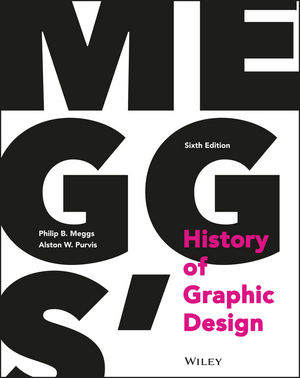 Meggs’ History of Graphic Design, 6th edition, by Philip B. Meggs and Alston Purvis, Wiley, 2016.
Meggs’ History of Graphic Design, 6th edition, by Philip B. Meggs and Alston Purvis, Wiley, 2016.
Meggs’ History of Graphic Design is the industry’s unparalleled, award-winning reference on this broad topic. With over 1,400 high-quality images throughout, this visually stunning text guides you through a saga of artistic innovators, breakthrough technologies, and groundbreaking developments that define the graphic design field.
Meggs presents compelling, comprehensive information enclosed in an exquisite visual format. The text includes classic topics such as the invention of writing and alphabets, the origins of printing and typography, and the advent of postmodern design. This new sixth edition has been updated to include key developments in the digital era, emerging design trends and technologies, and a lot more. For professionals, students, and everyone who works with or loves the world of graphic design, this landmark text is an invaluable guide that deserves a place in every creative professional’s library.
 Stop Stealing Sheep (& Find Out How Type Works), 3rd edition, by Erik Spiekermann, Adobe Press, 2013.
Stop Stealing Sheep (& Find Out How Type Works), 3rd edition, by Erik Spiekermann, Adobe Press, 2013.
After two decades as one of the world’s best-selling books on designing with type – including editions in Korean, German, Russian, Portuguese, and Polish – Stop Stealing Sheep & find out how type works continues to educate, entertain, and enlighten design students and type lovers around the globe. In this third edition, acclaimed type designer Erik Spiekermann brings his type classic fully up-to-date on mobile and web typography. It also now also includes scores of new visual examples on how to effectively communicate with type, and a full selection of new typefaces that are used and referenced throughout the book.
If you use type – and these days, almost everyone does – Spiekermann’s engaging, common-sense style will help you understand how to look at type, work with type, choose the best typeface for your message, and express yourself more effectively through design. Compact, yet rich with anecdotes and visual examples, this handbook’s multilayered design not only makes for a fun, fast read; it also invites exploration, ensuring you learn something new each and every time you open it up.
 Typographie: A Manual of Design Hardcover, 7th revised edition, by Emil Ruder, Verlag Niggli AG, 2001.
Typographie: A Manual of Design Hardcover, 7th revised edition, by Emil Ruder, Verlag Niggli AG, 2001.
Emil Ruder’s Typography is the timeless textbook from which generations of typographers and graphic designers have learned their fundamentals. Ruder, one of the great twentieth-century typographers, was a pioneer who abandoned the conventional rules of his discipline and replaced them with new rules that satisfied the requirements of his new typography. Ruder discusses his philosophy, including the power of white space, grids, and other foundations of good typography. Now in its sixth printing, this book has a hallowed place on the bookshelves of both students and accomplished designers.
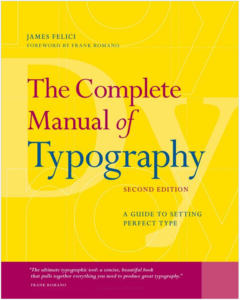 The Complete Manual of Typography: A Guide to Setting Perfect Type, 2nd edition, by James Felici, Peachpit Press, 2011.
The Complete Manual of Typography: A Guide to Setting Perfect Type, 2nd edition, by James Felici, Peachpit Press, 2011.
This richly illustrated book is about how type should look, and how to make it look that way; in other words, how to set type like a professional. It explains in practical terms how to use today’s digital tools to achieve the secret of good design: well set type. An essential reference for anyone who works with type, designers, print production professionals, and corporate communications managers can go to straight to the index to ?nd focused answers to speci?c questions, while educators and students can read it as a text book from cover to cover.
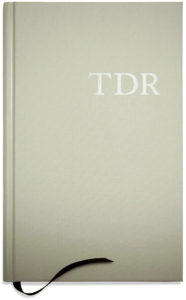 The Typographic Desk Reference: TDR, 2nd edition, by Theodore Rosendorf, Oak Knoll Press, 2016.
The Typographic Desk Reference: TDR, 2nd edition, by Theodore Rosendorf, Oak Knoll Press, 2016.
The Typographic Desk Reference (TDR) is an encyclopedic reference guide of typographic terms and classification with definitions of form and usage for Latin based writing systems. The second edition has over doubled in size. The specimens have been reclassified to modern standards, and the index (now 1/6 of the book) has been deeply cross referenced, allowing the reader to – among other things – find glyphs required for a particular language.
The book includes the following four main sections: Terms, Glyphs, Anatomy & Form, and Classification & Specimens. Designed for quick consultation, entries are concise and factual, making it handy for the desk. I have referred to the TDR many times, as there is no better typographic dictionary.
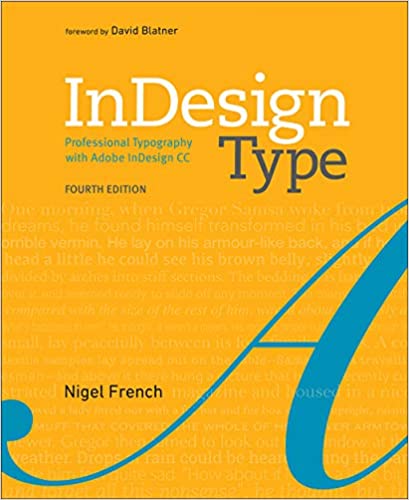 InDesign Type: Professional Typography with Adobe InDesign, 4th Edition, by Nigel French, Adobe Press, 2018.
InDesign Type: Professional Typography with Adobe InDesign, 4th Edition, by Nigel French, Adobe Press, 2018.
Adobe InDesign is the world’s premier page-layout tool, and its robust palette of typographic controls is a big reason why. This fully updated fourth edition by InDesign expert Nigel French is a comprehensive guide to creating professional type with this software. It covers micro and macro typography concepts, from understanding the nuance of a single spacing width to efficiently creating long and complex documents. Packed with visual examples, this excellent reference not only shows how to use InDesign’s extensive type features, but why certain approaches are preferable to others. Whether you’re creating a single-page flyer or a thousand-page catalog, whether printed or viewed on screen, InDesign Type is an invaluable resource for getting the most out of InDesign’s typographic toolset.
…and one more selection from Ilene’s editor, Mike Rankin.
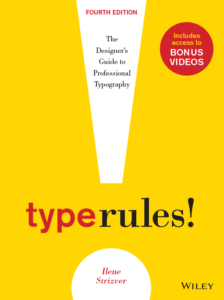 Type Rules! The Designer’s Guide to Professional Typography, 4th edition, by Ilene Strizver, Wiley, 2013.
Type Rules! The Designer’s Guide to Professional Typography, 4th edition, by Ilene Strizver, Wiley, 2013.
Type Rules!, now in its fourth edition, is an up-to-date, thorough guide to the principles and practices of typography. From the fundamentals to advanced techniques use by type-savvy professionals, this edition has everything today’s serious designer needs to use type effectively. Type Rules! is written and illustrated in a straightforward, yet engaging manner. It includes topics such as how to select the appropriate type for the job, understanding and applying the powerful features of OpenType fonts, spacing and kerning, avoiding common type crimes, how to fully harness the typographic power of InDesign, and a lot more. It also includes dozens of exercises to reinforce the understanding and application of the contents.
* * * * *
I hope you find this list useful. Feel free to add your own favorites in the comments section, below.
More Resources To Master Type and Typography
CreativePro Week is the essential HOW-TO conference for creative professionals who design, create, or edit in Adobe InDesign, Photoshop, Illustrator, Acrobat, and Microsoft PowerPoint.
Featuring over 30 expert speakers and 75 sessions and tutorials, CreativePro Week offers five days of in-depth training and inspiration, all in one place. No matter your skill level, you’ll learn techniques and best practices you can start using immediately to improve your productivity.
Members get a special discount on registration! Sign up today.



Thanks, Ilene— This looks to be an incredible, very selectively curated list. The books on this list I know are amazing, and I can’t wait to check out the others.